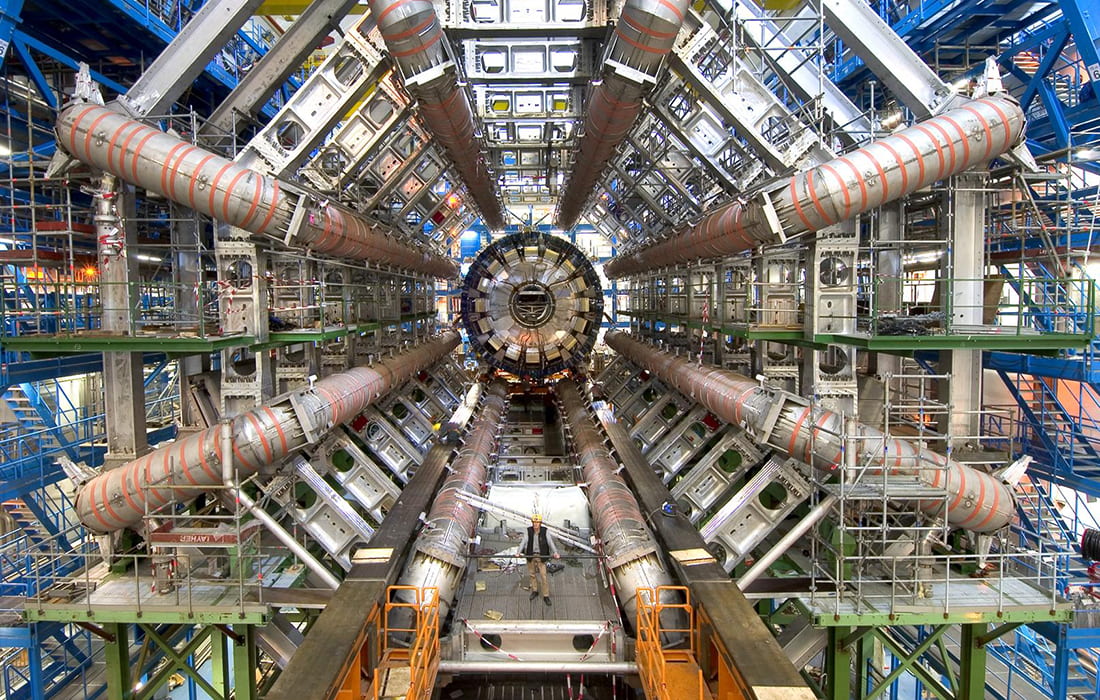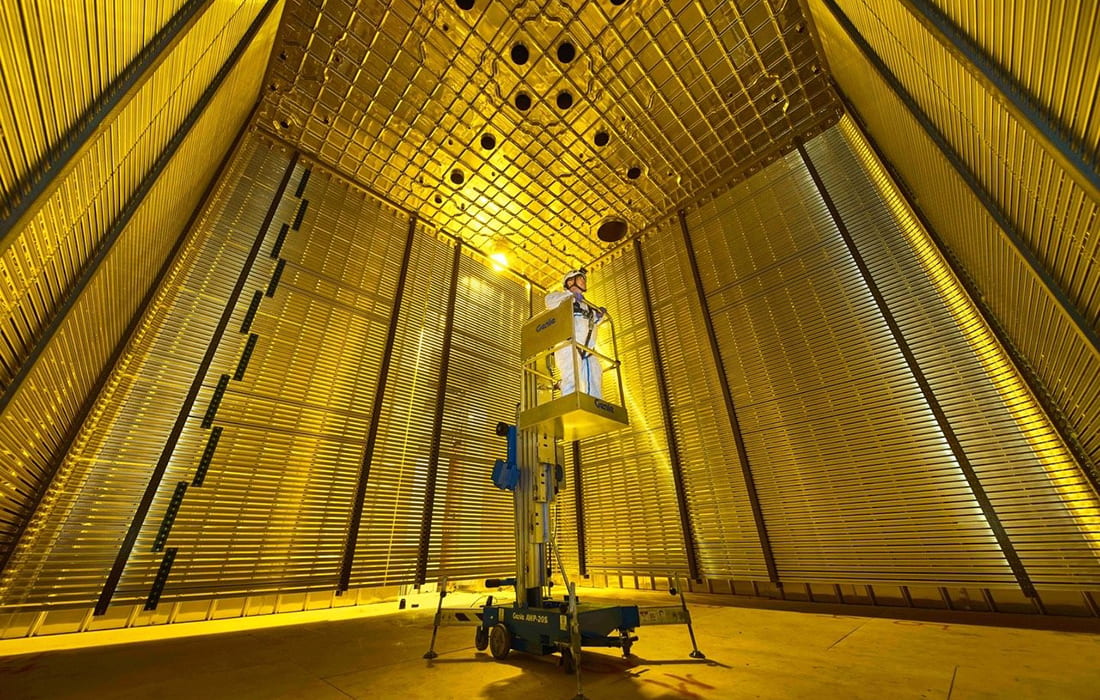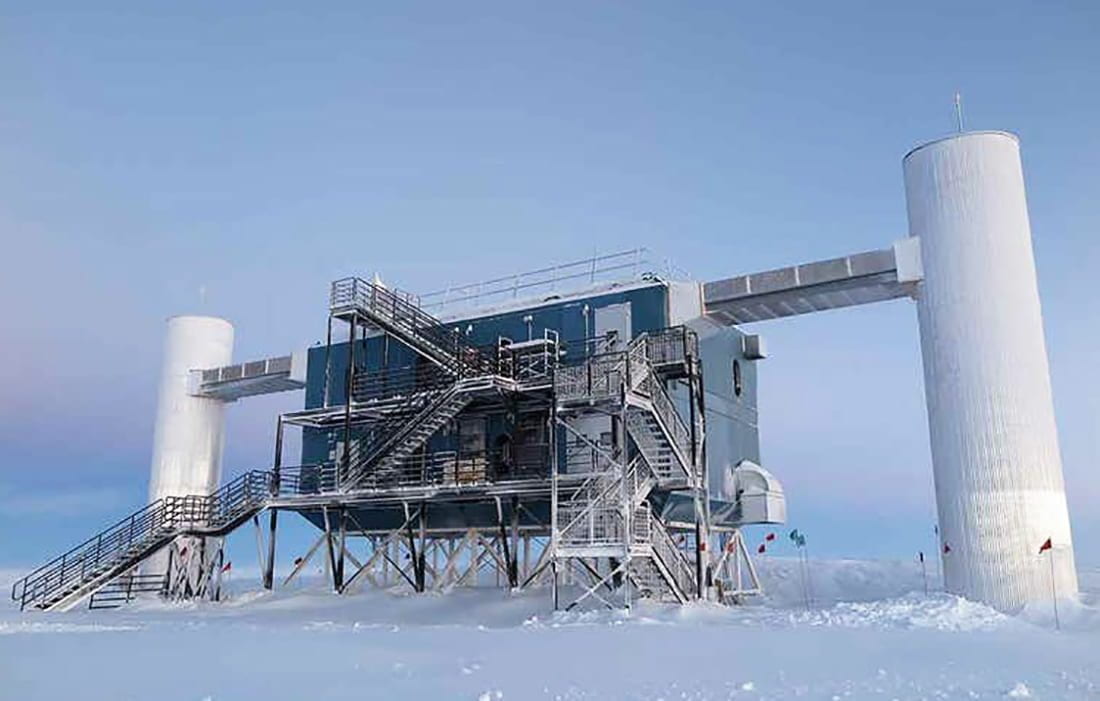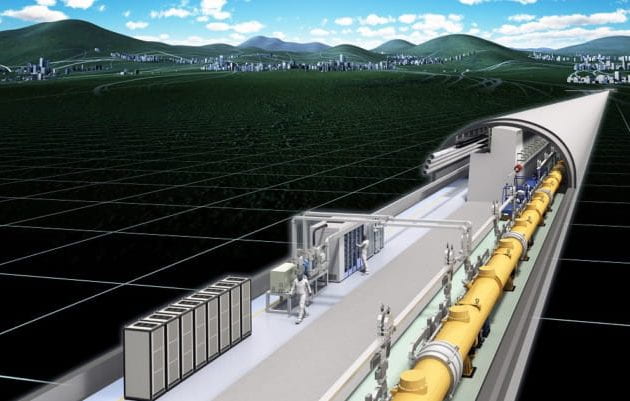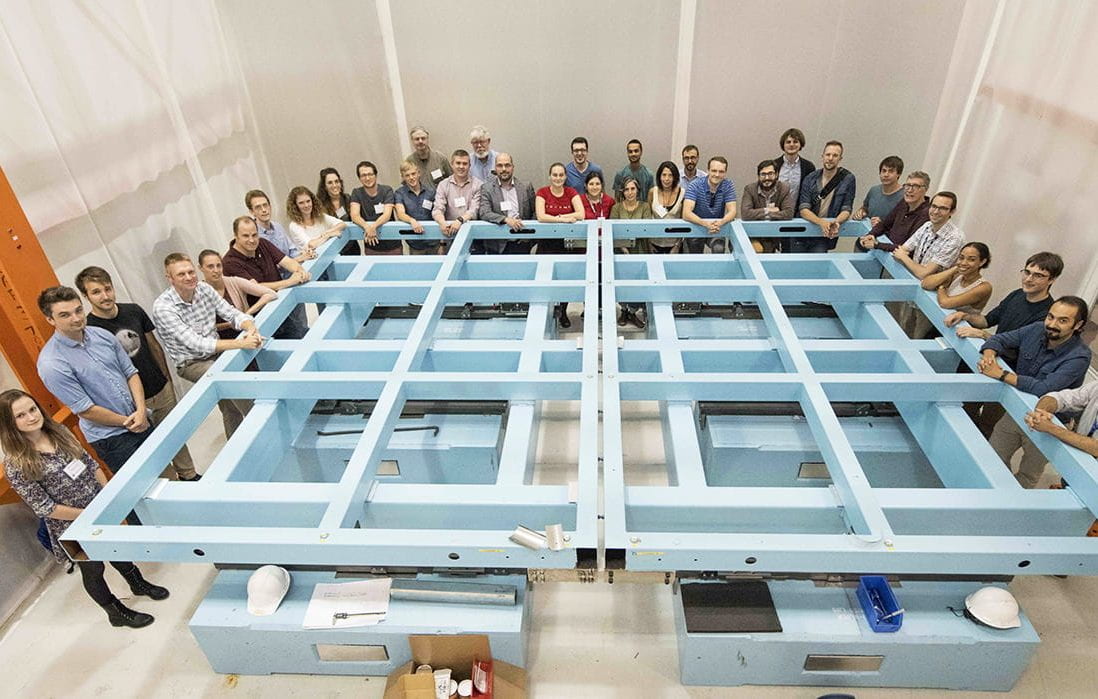The UTA Center of Excellence in High Energy and Nuclear Physics is dedicated to fundamental research at the highest energy scales through participation in experiments at the world’s most advanced accelerators. Group members share knowledge and expertise about research, detector technology, computing, and all areas of high energy physics. We are actively engaged in numerous fields of study, including the following:
- New particle searches (origin of mass)
- Supersymmetry and large extra dimension searches
- Studies of quantum chromodynamics
- Elastic and high mass diffractive scattering
- Grid computing
- Linear Collider detector research and development
ACTIVE RESEARCH COLLABORATIONS
Our members are involved in many major international research initiatives including the following experiments and projects:
ATLAS Experiment at CERN
- ATLAS is one of four major experiments at the Large Hadron Collider (LHC) at CERN.
- It is a general-purpose particle physics experiment run by an international team of physicists which includes faculty and students from UTA.
- Portions of the ATLAS detector’s intermediate barrel calorimeter were built at UTA, and UTA faculty and students have been actively involved in ATLAS research since the LHC first began producing collisions in 2010. ATLAS physicists test the predictions of the Standard Model, which encapsulates our current understanding of what the building blocks of matter are and how they interact.
- These studies can lead to ground-breaking discoveries, such as that of the Higgs boson, physics beyond the Standard Model and the development of new theories.
- ATLAS Experiment website
- CERN website
Deep Underground Neutrino Experiment (DUNE)
- The Deep Underground Neutrino Experiment (DUNE) international experiment for neutrino science and proton decay studies.
- The neutrino — the most abundant matter particle in the universe — has taken on major importance in recent decades in research into several fundamental questions about the nature of matter and the evolution of the universe. DUNE will seek to answer those questions.
- DUNE will consist of two neutrino detectors placed in the world’s most intense neutrino beam. One detector will record particle interactions near the source of the beam, at the Fermi National Accelerator Laboratory in Batavia, Illinois. A second, much larger, detector will be installed more than a kilometer underground at the Sanford Underground Research Laboratory in Lead, South Dakota — 1,300 kilometers downstream of the source. DUNE will be installed in the Long-Baseline Neutrino Facility, which is currently under construction.
- DUNE website
International Linear Collider
- The International Linear Collider (ILC) is a proposed particle accelerator with a planned initial collision energy of 500 GeV, which could be upgraded in the future to 1000 GeV (1 TeV). It will allow physicists to precisely explore extremely high-energy regions.
- Consisting of two linear accelerators that will stretch approximately 20 kilometers in length, the ILC will smash electrons and their antimatter particles, positrons, together at nearly the speed of light.
- Colliding nearly 7,000 times every second, the electrons and positrons will create an array of new particles that could help answer some of the most fundamental questions of all time.
- The collider is tentatively planned to be built in Japan.
- International Linear Collider website
- ILC newsletter featuring UTA researchers
IceCube South Pole Neutrino Observatory
- The IceCube Neutrino Observatory, located in Antarctica, is the first detector of its kind, designed to observe the cosmos from deep within the South Pole ice. An international group of scientists responsible for the scientific research makes up the IceCube Collaboration.
- Encompassing a cubic kilometer of ice, IceCube searches for nearly massless subatomic particles called neutrinos.
- These high-energy astronomical messengers provide information to probe the most violent astrophysical sources: events like exploding stars, gamma-ray bursts, and cataclysmic phenomena involving black holes and neutron stars.
- IceCube website
Neutrino Experiment Xenon TPC (NEXT)
- NEXT (Neutrino Experiment with a Xenon TPC) is a neutrinoless double-beta decay experiment that operates at the Canfranc Underground Laboratory in Spain.
- It is based on a novel detection concept for neutrinoless double-beta decay searches consisting in a Time Projection Chamber (TPC) filled with high-pressure gaseous xenon and with separated-function capabilities for calorimetry and tracking. David Nygren, UTA Presidential Distinguished Professor of physics, is co-spokesperson for the project and is the inventor of the Time Projection Chamber.
- More information
ICARUS Experiment
- The ICARUS (Imaging Cosmic And Rare Underground Signals) collaboration is investigating signs of physics that may point to a new kind of neutrino called the sterile neutrino.
- Other experiments have made measurements that suggest a departure from the standard three-neutrino model. ICARUS is also investigating the various probabilities of a neutrino interacting with different types of matter as well as neutrino-related astrophysics topics.
- The project originated in Italy before it spent two years undergoing upgrades at CERN. It moved to Fermilab in 2017 and was installed in its detector hall in 2018, where along with the new Cosmic Ray Tagger, it forms the far detector for the Short-Baseline Neutrino program.
- ICARUS website
SBND Experiment
- The SBND (Short-Baseline Near Detector) Experiment is one of three liquid argon neutrino detectors sitting in the Booster Neutrino Beam (BNB) at Fermilab as part of the Short-Baseline Neutrino Program. MicroBooNE and the ICARUS-T600 are the intermediate and far detectors in the program, respectively.
- SBND is a 112 ton active volume liquid argon time projection chamber (LArTPC) to be located only 110 meters from the BNB neutrino source. SBND will record over a million neutrino interactions per year.
- By providing such a high statistics measurement of the un-oscillated content of the booster neutrino beam, SBND is a critical element in performing searches for neutrino oscillations at the Fermilab Short-Baseline Program.
- SBND website
MicroBooNE Experiment
- MicroBooNE is a large 170-ton Liquid-Argon Time Projection Chamber (LArTPC) neutrino experiment located on the Booster neutrino beamline at Fermilab.
- The experiment first started collecting neutrino data in October 2015.
- MicroBooNE will investigate the low energy excess events observed by the MiniBooNE experiment, measure a suite of low energy neutrino cross sections, and investigate astro-particle physics.
- MicroBooNE is also contributing crucial input towards the construction of massive kiloton-scale LArTPC detectors for the future Deep Underground Neutrino Experiment (DUNE) and is the first detector in the Short-Baseline Neutrino (SBN) program at Fermilab.
- MicroBooNE website
LArIAT Experiment
- The LArIAT (Liquid Argon In A Testbeam) experiment is part of the international U.S. neutrino program, located at the Fermilab Test Beam Facility.
- The experiment aims to characterize Liquid Argon Time Projection Chamber (LArTPC) performance in the energy range relevant to both the Short Baseline (MicroBooNE, SBND, ICARUS) and Long-Baseline (DUNE) Neutrino experiments.
- It is capable of both accurately identifying and making precise 3D spatial and calorimetric measurements of particles.
- More information
